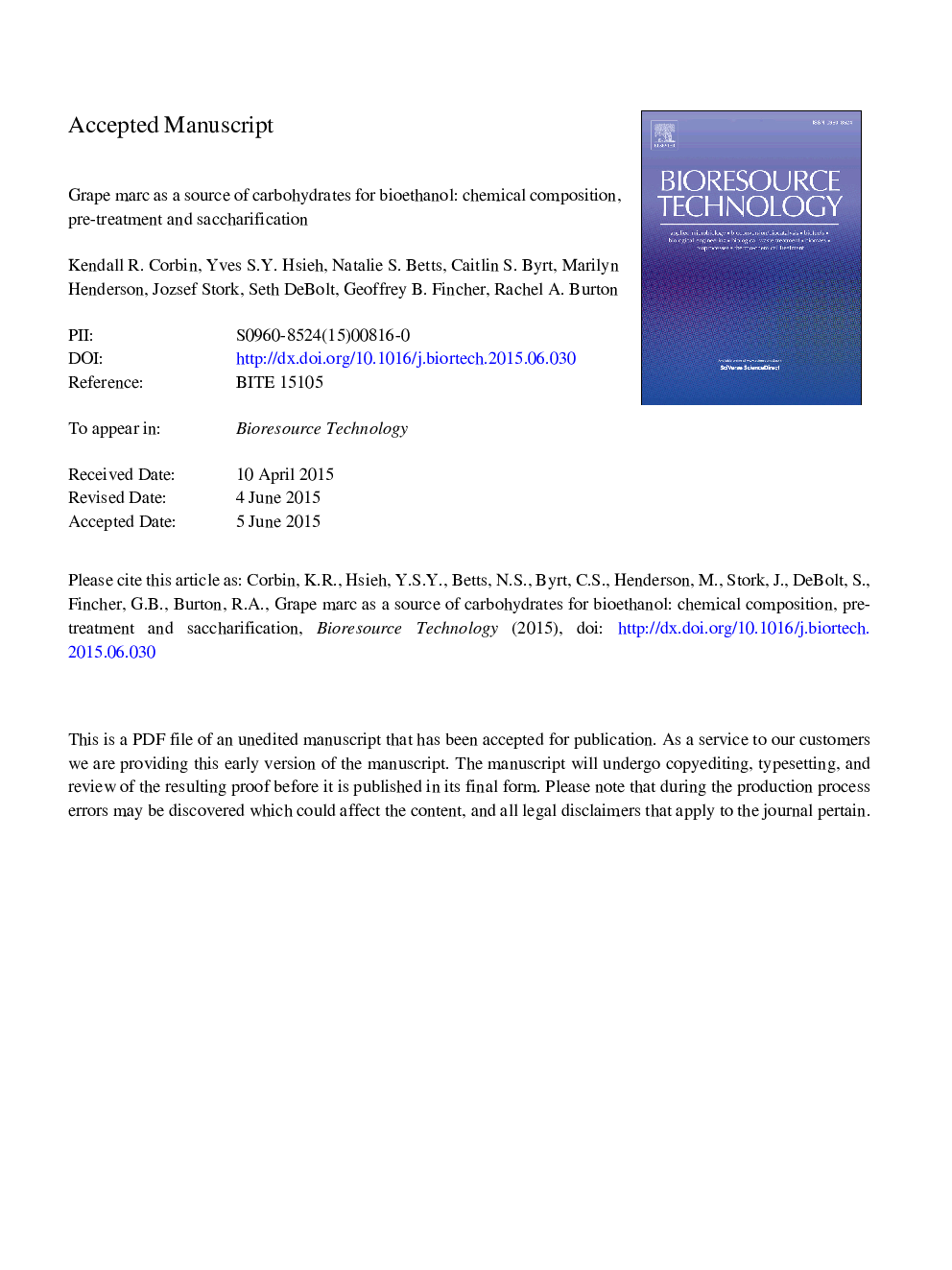| Article ID | Journal | Published Year | Pages | File Type |
|---|---|---|---|---|
| 7074104 | Bioresource Technology | 2015 | 34 Pages |
Abstract
Global grape production could generate up to 13Â Mt/yr of wasted biomass. The compositions of Cabernet Sauvignon (red marc) and Sauvignon Blanc (white marc) were analyzed with a view to using marc as raw material for biofuel production. On a dry weight basis, 31-54% w/w of the grape marc consisted of carbohydrate, of which 47-80% was soluble in aqueous media. Ethanol insoluble residues consisted mainly of polyphenols, pectic polysaccharides, heteroxylans and cellulose. Acid and thermal pre-treatments were investigated for their effects on subsequent cellulose saccharification. A 0.5Â M sulfuric acid pre-treatment yielded a 10% increase in the amount of liberated glucose after enzymatic saccharification. The theoretical amount of bioethanol that could be produced by fermentation of grape marc was up to 400Â L/t. However, bioethanol from only soluble carbohydrates could yield 270Â L/t, leaving a polyphenol enriched fraction that may be used in animal feed or as fertilizer.
Keywords
NCPsWSCArabinoseGlcFucoseFucASEGlcARHAHMFCDTAXylNa2CO35-(Hydroxymethyl)furfuralGalacturonic acidGlucuronic acidalcohol-insoluble residueBioethanolSaccharificationARArhamnoseaccelerated solvent extractorMass spectrometryGrape marcMannoseManAIRHILICPre-treatmentPolysaccharideSodium carbonateWater soluble carbohydrateshydrophilic interaction chromatographyHPLChigh-performance liquid chromatographyGalGalAGalactoseXyloseGlucose
Related Topics
Physical Sciences and Engineering
Chemical Engineering
Process Chemistry and Technology
Authors
Kendall R. Corbin, Yves S.Y. Hsieh, Natalie S. Betts, Caitlin S. Byrt, Marilyn Henderson, Jozsef Stork, Seth DeBolt, Geoffrey B. Fincher, Rachel A. Burton,
